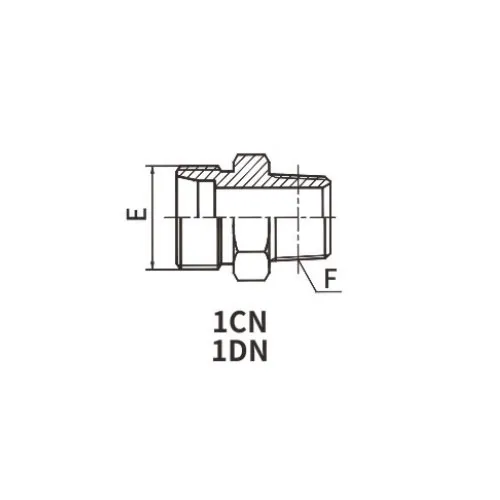Measuring a metric hydraulic fitting accurately is crucial for ensuring compatibility and performance in your hydraulic system. Incorrect measurements can lead to leaks, pressure drops, and even system failure. Here's a step-by-step guide to measuring a metric hydraulic fitting:

The first step in measuring a metric hydraulic fitting is to determine its length. This measurement is straightforward and can be done using a simple tape measure. Measure from one end of the fitting to the other, ensuring that you measure along the centerline of the fitting if it is curved or angled.
The outside diameter (OD) of a metric hydraulic fitting is crucial for ensuring that it will fit properly within your hydraulic system. You can measure the OD using vernier calipers or a digital caliper with sufficient accuracy. Place the calipers around the widest part of the fitting and read the measurement. Make sure to measure in several places to ensure consistency and accuracy.
The inside diameter (ID) of a metric hydraulic fitting is also important, as it determines the size of the hose or tube that can be connected to it. Again, use vernier calipers or a digital caliper to measure the ID. Place the calipers inside the fitting and read the measurement. As with the OD, measure in several places to ensure accuracy.
Metric hydraulic fittings often have threaded connections. To measure the thread gauge, you will need a thread pitch gauge or a thread gauge set. Insert the thread gauge into the threaded part of the fitting and rotate it gently. The gauge will indicate the thread size and pitch, which are crucial for finding a compatible fitting or adapter.
Some metric hydraulic fittings are angled to fit in tight spaces or to direct fluid flow in a specific direction. To measure the angle, you can use a protractor or an angle gauge. Place the protractor or gauge against the fitting and read the angle. Make sure to measure the angle accurately, as a slight deviation can affect the performance of your hydraulic system.
Always measure in millimeters (mm) when working with metric fittings.
Use high-quality tools for measuring to ensure accuracy.
Take multiple measurements and compare them to ensure consistency.
If you are unsure about any measurement, consult the manufacturer's specifications or seek professional advice.
By following these steps, you can accurately measure a metric hydraulic fitting and ensure that it will fit properly within your hydraulic system. Accurate measurements will help prevent leaks, pressure drops, and system failures, ensuring the reliability and efficiency of your hydraulic system.
